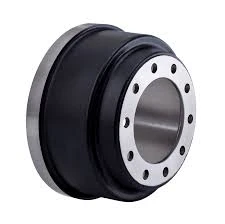
-
 Afrikaans
Afrikaans -
 Albanian
Albanian -
 Amharic
Amharic -
 Arabic
Arabic -
 Armenian
Armenian -
 Azerbaijani
Azerbaijani -
 Basque
Basque -
 Belarusian
Belarusian -
 Bengali
Bengali -
 Bosnian
Bosnian -
 Bulgarian
Bulgarian -
 Catalan
Catalan -
 Cebuano
Cebuano -
 Corsican
Corsican -
 Croatian
Croatian -
 Czech
Czech -
 Danish
Danish -
 Dutch
Dutch -
 English
English -
 Esperanto
Esperanto -
 Estonian
Estonian -
 Finnish
Finnish -
 French
French -
 Frisian
Frisian -
 Galician
Galician -
 Georgian
Georgian -
 German
German -
 Greek
Greek -
 Gujarati
Gujarati -
 Haitian Creole
Haitian Creole -
 hausa
hausa -
 hawaiian
hawaiian -
 Hebrew
Hebrew -
 Hindi
Hindi -
 Miao
Miao -
 Hungarian
Hungarian -
 Icelandic
Icelandic -
 igbo
igbo -
 Indonesian
Indonesian -
 irish
irish -
 Italian
Italian -
 Japanese
Japanese -
 Javanese
Javanese -
 Kannada
Kannada -
 kazakh
kazakh -
 Khmer
Khmer -
 Rwandese
Rwandese -
 Korean
Korean -
 Kurdish
Kurdish -
 Kyrgyz
Kyrgyz -
 Lao
Lao -
 Latin
Latin -
 Latvian
Latvian -
 Lithuanian
Lithuanian -
 Luxembourgish
Luxembourgish -
 Macedonian
Macedonian -
 Malgashi
Malgashi -
 Malay
Malay -
 Malayalam
Malayalam -
 Maltese
Maltese -
 Maori
Maori -
 Marathi
Marathi -
 Mongolian
Mongolian -
 Myanmar
Myanmar -
 Nepali
Nepali -
 Norwegian
Norwegian -
 Norwegian
Norwegian -
 Occitan
Occitan -
 Pashto
Pashto -
 Persian
Persian -
 Polish
Polish -
 Portuguese
Portuguese -
 Punjabi
Punjabi -
 Romanian
Romanian -
 Russian
Russian -
 Samoan
Samoan -
 Scottish Gaelic
Scottish Gaelic -
 Serbian
Serbian -
 Sesotho
Sesotho -
 Shona
Shona -
 Sindhi
Sindhi -
 Sinhala
Sinhala -
 Slovak
Slovak -
 Slovenian
Slovenian -
 Somali
Somali -
 Spanish
Spanish -
 Sundanese
Sundanese -
 Swahili
Swahili -
 Swedish
Swedish -
 Tagalog
Tagalog -
 Tajik
Tajik -
 Tamil
Tamil -
 Tatar
Tatar -
 Telugu
Telugu -
 Thai
Thai -
 Turkish
Turkish -
 Turkmen
Turkmen -
 Ukrainian
Ukrainian -
 Urdu
Urdu -
 Uighur
Uighur -
 Uzbek
Uzbek -
 Vietnamese
Vietnamese -
 Welsh
Welsh -
 Bantu
Bantu -
 Yiddish
Yiddish -
 Yoruba
Yoruba -
 Zulu
Zulu
drum brake components and functions
Understanding Drum Brake Components and Functions
Drum brakes are a crucial component of modern automotive braking systems, especially in older vehicles and certain models that prioritize simplicity and reliability
. The drum brake system utilizes several key components, each playing a significant role in ensuring effective braking performance.At the heart of the drum brake assembly is the brake drum. This cylindrical component is typically made of cast iron or steel and is attached to the wheel hub. When the driver applies the brakes, the brake drum rotates with the wheel. Inside the drum, there are brake shoes, which are curved metal plates lined with friction material. When the brakes are activated, hydraulic pressure forces the brake shoes outward against the inner surface of the drum, creating friction that slows down the wheel.
The brake shoes are attached to the backing plate, which provides structural support. Each set of shoes is equipped with a return spring that retracts them to their original position once the brake pedal is released, ensuring that the shoes do not drag against the drum, which could cause premature wear.
drum brake components and functions

Another critical component is the wheel cylinder, which is a hydraulic device that converts brake fluid pressure into mechanical force. When the brake pedal is pressed, brake fluid travels through the brake lines and enters the wheel cylinder. The pressure causes the cylinder to expand, pushing the piston outward and forcing the brake shoes against the drum.
Drum brakes also include an adjuster mechanism, typically in the form of a star wheel or an automatic adjustment system. This mechanism ensures that the distance between the brake shoes and the drum is optimal, allowing for consistent braking performance and compensating for wear over time.
Furthermore, the drum brake assembly may feature a dust shield, which helps protect the internal components from dirt, debris, and moisture, enhancing the lifespan of the brake system.
In summary, drum brakes incorporate various components—brake drums, brake shoes, wheel cylinders, and adjusters—working in unison to provide effective stopping power. While disc brakes have become more prevalent in modern vehicles, understanding the components and functions of drum brakes is essential for appreciating their role in automotive history and their continued use in certain applications today. Regular maintenance and inspection of these components are crucial for ensuring safety and performance, highlighting the importance of this traditional braking technology in our vehicles.
-
What Are Drum BrakesNewsJul.07,2025
-
Understanding Brake Drum MaterialNewsJul.07,2025
-
Semi-Trailer Brake Drum: A Key Component for Extreme Loads and Long-Distance TransportNewsJul.07,2025
-
Drum Brake Pads for SaleNewsJul.07,2025
-
Brake Drums for SaleNewsJul.07,2025
-
Brake Drum ManufacturerNewsJul.07,2025
-
Aluminum Brake Drums: The Future of High-Performance CarsNewsJul.07,2025
